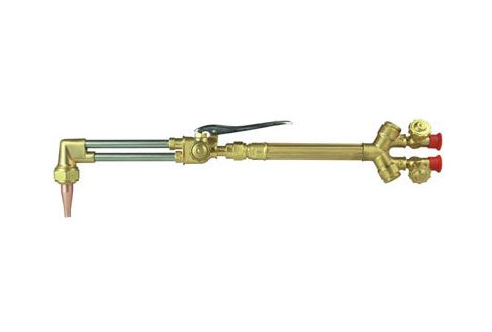The welding torch is a vital tool in the field of welding and plays a significant role in the welding process. Here are some key reasons highlighting the importance of a welding torch:
Heat Source: The primary function of a welding torch is to provide a controlled heat source for the welding process. The torch generates a flame or an electric arc that melts the base metal and filler material, allowing them to fuse together. The heat produced by the torch is crucial for achieving the necessary temperature to create strong and durable weld joints.
Precision and Control: Welding torches offer precise control over the heat input during the welding process. By adjusting the gas flow and flame settings, welders can control the size, intensity, and direction of the flame or arc. This control enables them to focus the heat precisely where it is needed, ensuring optimal melting of the base metals and precise deposition of the filler material.
Versatility: Welding torches are versatile tools that can be used for various welding processes, including gas welding, arc welding, TIG (Tungsten Inert Gas) welding, and MIG (Metal Inert Gas) welding. Different torch configurations and accessories are available to accommodate different welding techniques and applications. This versatility makes welding torches adaptable to a wide range of welding projects and materials.

Welding Torch
Efficiency and Productivity: Welding torches contribute to the efficiency and productivity of the welding process. The ability to control the heat source allows welders to work at the optimal temperature for the specific welding application, minimizing the time required for the weld to solidify. This efficiency translates into increased productivity, as welders can complete welding tasks more quickly and move on to the next one.
Mobility and Accessibility: Welding torches are portable tools that allow welders to access and weld in various positions and locations. The flexibility of the torch, combined with the use of hoses and cables, enables welders to reach confined spaces, overhead areas, and other challenging positions. This mobility and accessibility make welding torches suitable for a wide range of welding scenarios, from large-scale construction sites to intricate fabrication projects.
Weld Quality and Strength: The proper use of a welding torch contributes to the quality and strength of the weld joints. Precise control over the heat input ensures that the weld is neither under-heated nor overheated, reducing the risk of defects such as incomplete fusion or excessive distortion. This control also allows for better penetration and fusion between the base metals and filler material, resulting in stronger and more reliable welds.
Safety: Welding torches incorporate safety features and practices to protect the welder and the surrounding environment. These features may include flame retardant hoses, anti-backflow mechanisms, and heat-resistant handles. Welding torches also promote safe working conditions by allowing the welder to maintain a safe distance from the welding arc or flame, minimizing the risk of burns or other injuries.
Skill Development: Welding torches require skill and expertise to operate effectively. The use of a torch involves understanding the characteristics of different welding processes, proper flame or arc adjustments, and precise control of the heat source. Using a welding torch helps welders develop their skills and master the art of welding, leading to improved craftsmanship and quality of the welds produced.
In summary, welding torches are essential tools in the welding industry, providing a controlled heat source, precision, versatility, and mobility. They contribute to efficient and productive welding processes, ensure weld quality and strength, prioritize safety, and foster skill development among welders. Whether it's gas welding, arc welding, TIG welding, or MIG welding, the welding torch plays a crucial role in achieving successful welds.






